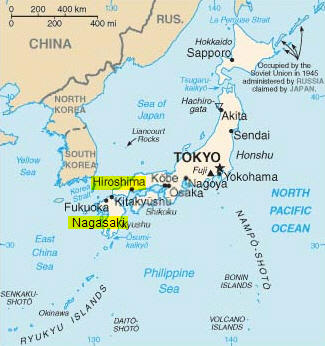




Boeing B-29 Superfortress
Originally conceived in 1939 by the Army Air Forces, the B-29 Super Fortress was one of the many tools the United States used to fight the war. A 20-minute movie produced by the Army Pictorial Service gives insight about the making of the B-29. The movie is titled Birth of the B-29. The first four minutes of the film describes how Japan's "little people" exported "Made in Japan" silk for steel while developing "plans for world conquest". Some scenes of Japanese atrocities committed are shown (some of the images are unsettling) and images of B-25s launching from the U.S.S. Hornet for the bombing raid on Tokyo that became known as "the Doolittle Raid". The film shows the B-29 manufacturing facility with its many innovative features and details the plane's specifications. The film praises the men and woman of many ages who built the planes and ends by showing Chinese building a runway and a B-29 landing on that runway. The narrator's last line: "The target, gentlemen, is Japan."
On July 26, 1945, President Truman, while at Potsdam, Germany, warns Japan of a "rain of ruin" if she does not surrender
President Truman announced the first atomic bomb was dropped on Hiroshima, Japan

On April 18, 1942, B-25 Mitchell bombers, under the command of Colonel James "Jimmy" Doolittle, launched from the U.S.S. Hornet aircraft carrier would be the first American bombers to bomb Tokyo but the B-29 Superfortresses would deliver significant damage to Tokyo during many missions against Tokyo. Incendiary bombs were dropped on Tokyo in February and March 1945. The B-29 was chosen to deliver the atomic bombs to Hiroshima and Nakasaki.
Atomic Bombings of Japan
On August 6, 1945 the crew of the Boeing B-29 Superfortress Enola Gay, piloted by Colonel Paul Tibbets, dropped the Little Boy atomic bomb over Hiroshima, Japan. Japan did not surrender.
The photographs below are of the Enola Gay on Tinian in the Marianas Islands, an atomic bomb explosion, and Hiroshima ruins.
For World War 2 history and speech clips visit the World War Two page.
Visit the Japan Surrenders page to learn more about the surrender ceremony aboard the U.S.S. Missouri in Tokyo Bay.
The Bombs
The United States had done some atomic bomb testing as a result of the Manhattan Project started in June 1942 but had only two atomic weapons available in August 1945: Little Boy and Fat Man. The two bombs were constructed of different materials and used different explosive devices.
A Little Boy atomic bomb was released over Hiroshima and was constructed with uranium, weighed 9,000 pounds, and produced an explosive force of roughly 20,000 tons of TNT.
To learn more about the battle for Iwo Jima and the carnage inflicted by both sides, click here.
The Fat Man atomic bomb, used over Nagasaki, was constructed with plutonium, weighed 10,000 pounds but also had an explosive force of roughly 20,000 tons of TNT. Fat Man's explosive yield was the same as Little Boy but due to the terrain, Fat Man produced less damage from the explosion. The terrain around Hiroshima is relatively flat whereas Nagasaki's terrain is hilly.
Prior to August 1945, the United States was making progress in her fight against Japan but casualties on both sides were high and the invasion of mainland Japan had not even started. Few people knew about the atomic bomb, even within the United States Armed Forces. American military strategists developed a plan - Operation Downfall - using convential forces for the invasion of Japan. Operation Downfall consisted of two successive operations: Operation Olympic and Operation Coronet. Operation Olympic was scheduled to begin on November 1, 1945; Operation Coronet would commence on March 1, 1946. Operation Downfall became unnecessary when Japan unconditionally surrendered after the atomic bombings.
Source of bomb information: Literature at the United States Air Force National Museum.
Using the Atomic Bomb Saved Lives
President Harry Truman announced the atomic bombing of Hiroshima on August 6, 1945. On August 9, 1945, a second atomic bomb exploded above Nagasaki. The Japanese officially surrendered on August 15, 1945. President Truman announced Japan's unconditional surrender to the Allied Forces.
Today, some people question President Harry Truman's decision to use atomic weapons. The assertion typically is the Japanese were about to surrender and/or the use of the atom bomb was cruel and inhumane because of the number of casualties. Even if the Japanese were considering surrender, they were not considering "unconditional surrender" and while diplomacy was attempted, people would be dying. At the time, the use of the atomic bomb was not controversial.3 With the shear destructive power of one atomic bomb and the visual impact of the mushroom cloud, one can understand how it now captures so much attention, but more people died and more property was damaged with the use of conventional ordinance.
Let's compare the casualties death from the atomic bombings with that of conventional and incendiary bombings. The number of deaths from the actual bombing of Hiroshima varies from 70,000 deaths4 to 100,0005 deaths. The blast from the atomic bomb burned 4.4 square miles10 destroying or damaging almost all of the city's 76,000 structures.5 For Nagasaki, the number of deaths totaled 39,000 people.10 By 1950, the deaths attributed to the atomic bombings were 200,0005 and 6 in Hiroshima and 140,0007 in Nagasaki (not counting the many wounded and residual injuries).
Conventional and incendiary (i.e. fire bombs) bombing also inflicted significant casuaties and damage on enemy cities during the war. Dresden, Germany, a city of minimal military significance, was heavily bombarded from February 13 through April 17, 1945, killing between 35,000 and 135,000 people.1 Heavy conventional, incendiary bombing raids were not isolated to Europe. A three-day bombing raid on Tokyo, Japan starting on March 9, 1945 killed at least 83,800 people and wounded more than 160,000 people.2 Japan claimed more than 130,000 people dead.2 The bombings and the subsequent fires destroyed approximately 16 square miles of the city - 40 percent of the city's area and 267,000 buildings!2 The United States lost only 14 aircraft and this type of bombing was conducted over other Japanese cities during the next few months.2 Incendiary bombs were used on 60 cities between November 1944 and July 1945 resulting in approximately 800,000 casualties and deaths.6 The use of the atomic bomb "against Hiroshima and Nagasaki produced fewer casualties in each case than the Tokyo attack."2
In deciding whether to use atomic weapons against Japan, one would also need to consider what was happening on the domestic front in Japan. Japan had an army of two million soldiers and 8,000 aircraft, some of which would be used in Kamikaze attacks against U.S. ships. Allied casualty estimates for the invasion of Japan varied widely, from 250,000 to a million and even greater losses for the Japanese. This was based in part on the ferocity the Japanese fought in previous Pacific battles on small islands such as Saipan, Okinawa, and Iwo Jima. In 1945, in preparation for the imminent invasion of their home islands, the Japanese government began mobilizing almost all citizens for an all-out defense. On March 23, 1945, Japan formed the Patriotic Citizens Fighting Corps allowing all men ages 16 to 60 and all women ages 17 to 40 to be called upon under the Volunteer Enlistment Law.11 Civilians were trained using spears and other sharp instruments. A mobilized high school girl, Yukiko Kasai, was given an awl (a small pointed tool for piercing holes in leather and other soft material) and was told "Even killing just one American soldier will do."11 Since Japan was unable to provide uniforms to civilians, allowing civilians to be distinguished from soldiers, and that Japan was calling for all civilians to fight, all civilians would effectively became targets for the invading forces. In a July 21, 1945 report, at least one intelligence officer for the U.S. Fifth Air Force stated "The entire population of Japan is a proper military target...There are no civilians in Japan."11 On March 27, 1945, Public Law Number 30 mobilized all Japanese citizens.11 All schools except for grades one through six were suspended.11
Click here to watch the 20-minute video Birth of the B-29
The photographs below are of the B-29 Bockscar on display at the United States Air Force National Museum in Dayton, Ohio. The nose art was added after the atomic bombing mission.
On August 9, 1945 Major Charles W. Sweeney piloted the B-29 Superfortress Bockscar from the island of Tinian with Fat Man - the only remaining atomic bomb America had at the time. The mission: detonate the bomb over the city Kokura. Due to cloud cover over the city, Bockscar diverted to the secondary target of Nagasaki, a major industrial city. The bomb was released and detonated above Nagasaki at 11 a.m.
Below are photograhs of Charles W. Sweeney and the crew of Bockscar, two days after the atomic bombing of Nagasaki and various views of the plane's cockpit.
Please note: The audio and video on this page require Windows Media Player. The player will launch in a new window and the media may take a few moments to load.
President Truman likely considered other factors as well such as the dollar cost of an invasion, the number of Americans who might die or be injured, and the ferocity in which the Japanese had defended their small islands. One such small island was Iwo Jima. The battle for this small island in February 1945 cost the lives of 6,800 and injured over 28,000 Americans.9 The death toll for Japan was worse. Over 21,000 Japanese troops were killed.9 Another one of Japan's small, but strongly defended islands was Okinawa, an island more than 400 miles from mainland Japan. During the Okinawa campaign, code-name Operation Iceberg, 12,000 Americans were killed and 36,000 wounded.8 Japanese losses were greater - at least 100,000 dead.8 Many committed suicide. There was valid concern and belief among American officials the Japanese resolve to defend their motherland would be greater than what occurred in Okinawa where it took almost three months to subdue the defenders. The casualties the United States would incur should she invade the Japanese mainland would be even worse.
Although the deaths and casualties from the atomic bombings were tragic and significant, the death and damage from conventional ordinance was at least as great, if not greater. In addition, they were the deaths of the enemy and not one American life was lost in the two atomic bombings. By concluding the war quickly with the use of atomic bombs, Truman likely saved the lives of tens of thousands of people on both sides of the war.
Citations:
1 The New Encyclopedia Britannica, Micropedia Ready Reference, Volume 4, 15th Edition, copyright 2007, "Dresden", page 221.
2 Peter Rainbow, Raid on Tokyo, 1945. In Tucker, Spencer C., gen. ed. Encyclopedia of American Military History. New York: Facts on File, Inc., 2003
3 Brian C. Melton Decision to Deploy the Atomic Bomb. In Tucker, Spencer C., gen. ed. Encyclopedia of American Military History. New York: Facts on File, Inc., 2003.
4 The New Encyclopedia Britannica, Micropedia Ready Reference, Volume 5, 15th Edition, copyright 2007, "Hiroshima", page 943.
5 Rodney P. Carlisle, "Hiroshima" Encyclopedia of the Atomic Age. New York: Facts on File, Inc., 2001.
6 GlobalSecurity.org and the paper "Tainted Decision: The Atom Bomb and America's Decision to End World War II" by Major Lee T. Wyatt, III, United States Army, Command and Staff College, Education Center, Marine Corps Development and Education Command, Quantico, Virginia 22134, March 25, 1986), page 8.
7 GlobalSecurity.org and the paper "Tainted Decision: The Atom Bomb and America's Decision to End World War II" by Major Lee T. Wyatt, III, United States Army, Command and Staff College, Education Center, Marine Corps Development and Education Command, Quantico, Virginia 22134, March 25, 1986), page 26.
8 The New Encyclopedia Britannica, Micropedia Ready Reference, Volume 8, 15th Edition, copyright 2007, "Okinawa", page 900.
9 The New Encyclopedia Britannica, Micropedia Ready Reference, Volume 6, 15th Edition, copyright 2007, "Iwo Jima", page 446.
10 The New Encyclopedia Britannica, Macropedia Volume 21, 15th Edition, copyright 2007, page 853.
11 Richard B. Frank, Downfall: The End of the Imperial Japanese Empire, Random House, 1999, pages 188 and 189.









